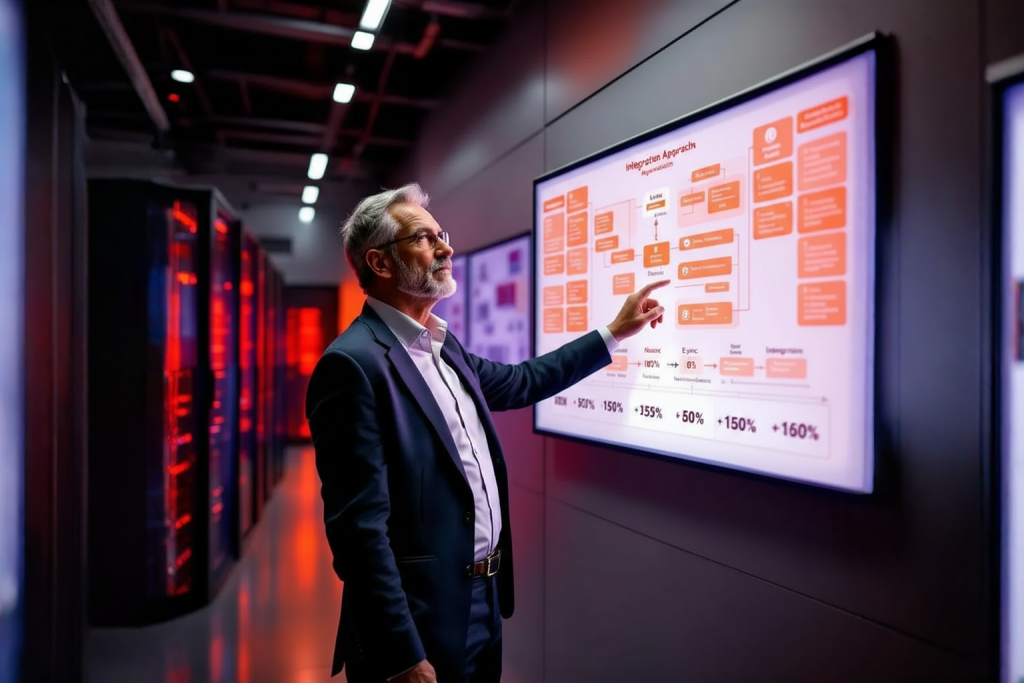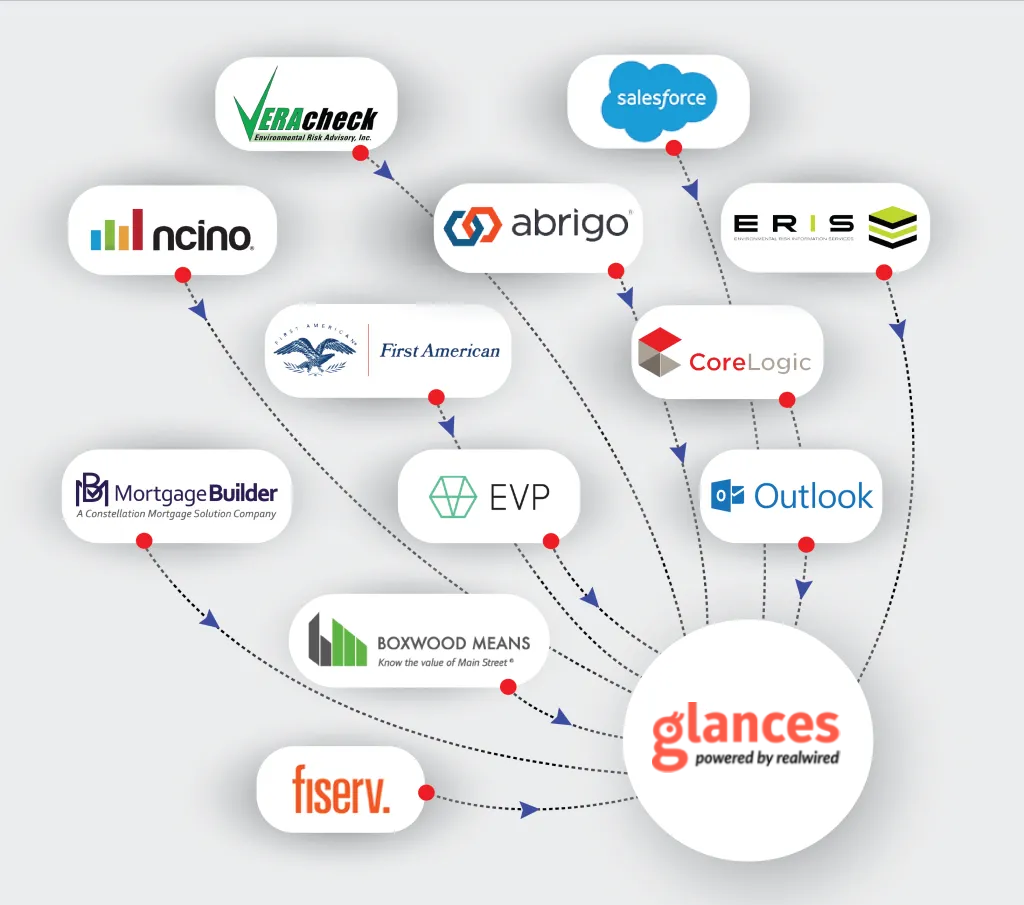Glances vs. Traditional Two-Way Integration
Glances isn’t a two-way sync; it’s a smarter, more flexible integration.
One of the most common questions we hear is, ‘Does Glances sync data between platforms?’ The answer is no, and that eliminates your biggest integration risks.
Unlike traditional two-way integrations that create operational complexity, system fragility, and regulatory risk through constant syncing and data duplication, Glances eliminates these risks entirely. Instead, it delivers the right data, from the system of record, exactly when and where you need it.
With no syncing, storing, or unnecessary duplication, Glances keeps information accurate, secure, and easy to access.

- No Risk of Data Overwrites
- Simpler Setup and Maintenance
- Instant, Real-Time Data Access
- Cleaner, Audit-Ready Information
- Flexible One-to-Many Connections
Trusted by Banks Like Yours



What Is a Two-Way Sync?
Two-way sync integrations automatically push updates between two systems so the data stays the same in both places. This can work for some situations, but it comes with significant drawbacks, especially in regulated environments like banking.
Key challenges with two-way syncs:
- Complex setup and constant maintenance
- Risk of data overwriting or corruption
- Slower performance due to background syncing queues
- Growing IT burden as systems expand


The Glances Difference
Glances takes a modern, no-code approach. Instead of syncing or copying data between systems, it provides your team real-time, read-only access to authoritative data, straight from the system of record.
Why Banks Choose Glances over Traditional Integration.:
- No syncing. No duplication. Glances never stores or copies your data. Rather, it shows live data directly from the system of record.
- Unified view, across all platforms. Access LOS, Core, YouConnect, CRM, and other SaaS tools from a single pane of glass.
- Act without switching apps. Order appraisals, send emails, upload documents without leaving the app you're in.
- Only move data when needed. When specific data does need to be transferred, Glances handles it seamlessly and securely.
Real-Time Data Without the Integration Headaches
| Feature | Glances | Traditional Two-Way Sync |
|---|---|---|
| Syncs data between systems | No syncing – view-only access | Yes (bi-directional) |
| Setup complexity | Low (no-code) | High |
| Ongoing maintenance | None | Required |
| Risk of overwriting or data loss | No – original data remains intact | Yes |
| Data stored outside source system | Never | Often |
| System performance impact | Lightweight and browser-based | Can slow systems |
| IT resources needed | Minimal | Significant |

Accelerate Your Integration Roadmap. See Glances in Action
"*" indicates required fields
